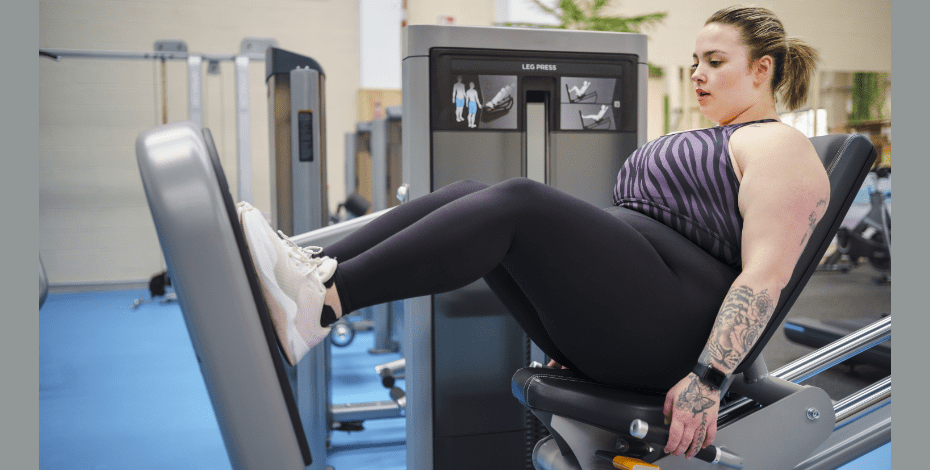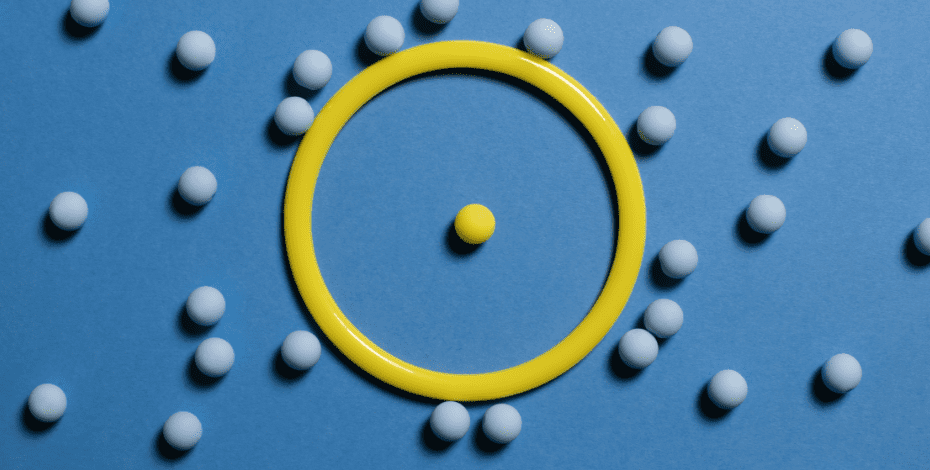
Mary honoured to be in great company

When Mary Magarey stepped up on to the stage at the APA Scientific Conference in Adelaide late last year to be named as one of three new APA Honoured Members, it was a defining moment in a long career devoted to the profession she loves. But becoming a physiotherapist wasn’t always in her plan.
With aspirations to become a vet, it was with much disappointment that a young Mary Magarey learned that she would not be supported to move interstate from Adelaide to study vet science.
‘It wasn’t what young women did in those days,’ she says. Instead, and admittedly under some sufferance, Mary was pointed in the direction of physiotherapy.
‘In those days you had to travel interstate to go to vet school, and my parents were not prepared for me, as a girl, to do that,’ Mary says. ‘I had been tossing up between vet science and medicine, so I then said, “Oh well, I’ll apply for medicine.” However, my father didn’t think my results would be good enough; as it turned out, they would have been.
‘At the time [my mother] was saying: “Why don’t you think of physio? It’s such a nice thing for a girl to do. You can go on working part time after you’re married and had children”,’ Mary says. ‘I was not particularly interested, but that’s how I got into physio.’
Fortuitously, in her third year of study, while on the ‘manipulation roster’, a fire was started in Mary’s belly. The manips roster, as it was colloquially known, was taught by two renowned and well-respected physiotherapists, Geoff Maitland and Patricia Trott, two of the founding members of the Manipulative Therapists Association of Australia (now Musculoskeletal Physiotherapy Australia).
The methods taught by Geoff and Pat, and the principles behind their techniques in manipulative therapy, made sense to the student Mary, who subsequently abandoned plans to become a paediatric physiotherapist.
Recently married, and after a year working in a teaching hospital in Adelaide as a new graduate, Mary and her husband moved to Canberra for his job. It was a bit of a shock for the young physiotherapist to realise that Canberra, at the time, was a long way behind in its physiotherapy compared with what she had been used to in Adelaide.
‘I discovered that, essentially, you booked a short wave machine and then found out which part of the body you would be putting the short wave on, rather than doing a proper assessment and trying to develop a management plan. And I just couldn’t handle it,’ Mary says. ‘I can assure you, physiotherapy in Canberra is not like that now.’
Mary, who joined the APA as a new graduate, had maintained her links with the APA South Australia branch while in Canberra, and a notice in the branch newsletter soon caught her eye. An advertisement for a graduate diploma in manipulative therapy piqued Mary’s interest.
‘I applied, even though I did not fit the criteria, not having a full two years’ experience and, to my complete surprise, got in. That very much changed my direction in physiotherapy—and life. It was only the second year that this program had run,’ Mary says.
‘There were only three of us, so we did one term when we were taught peripheral manipulation; we learnt every single technique with Geoff Maitland performing the technique on each of us, and then having us replicate it on him. And we couldn’t move onto the next technique until he was satisfied that we had the technique correct.
‘For the next three months, we joined in with what was then the APA South Australia Branch Vertebral Manipulation Course, also run by Geoff and Pat Trott. Quite fortuitously and unexpectedly, we ended up also having Brian Edwards on the teaching staff, Brian being the third of the key manipulative therapists in those early days.
'There were 12 [students from the vertebral course]—Gwen Jull and Ruth Grant were two of the people on the course who have gone places in their lives since—and three of us. The last three months was back to the three of us with Geoff—what a way to learn.’
This invaluable hands-on experience as a young physiotherapist qualified Mary to be asked to teach on the same course just six months after she finished—and until recently it was a role she had continued.
Although officially retiring from the university in 2014, Mary can’t give up her teaching completely. She still provides ongoing input into the masters programs and is still involved in professional development courses both nationally and internationally.
She taught alongside Geoff Maitland for 10 years and alongside Pat Trott for 25 years, also working clinically half-time for the first 10 years—while presenting both nationally and internationally on physiotherapy assessment and management of the shoulder through the APA, other international organisations and, over the last seven years, with Australian Specialist Physiotherapy Education.
‘I think if you get as intensive and passionate an education as I was privileged to receive, in a particular field that you have taken a liking to, you’re inevitably going to develop some of that passion yourself,’ Mary says.
‘Their way of thinking, pedantry about precision with assessment and treatment, and the treatment skills they taught, have been engrained in me since I was really very young.
‘What we now understand as clinical reasoning is fundamentally Geoff Maitland’s way of assessing and reassessing, and the foundation of what he used to call his philosophy, or the ‘Maitland Concept’. He never liked the idea of ‘Maitland techniques’, but he liked the idea of people understanding his way of thinking,’ Mary says.
‘I have no concept of how you could practise physiotherapy other than through reassessment. I don’t understand how physios could ever just bring somebody in and treat them without undertaking a decent assessment.’
Mary says Pat Trott encouraged her involvement with the then Manipulative Therapists Association of Australia. Mary took over from Pat as the chair of the Academic Standards Committee in 1986, and that began Mary’s involvement within the APA network.
‘It never occurred to me not to be a member of the APA, it was simply what you did,’ Mary says. She was also inspired by her surgeon father, Bob (Sir Rupert) Magarey (knighted for services to medicine and medical education) to seek specialisation when the opportunity arose.
Mary comes from a family of high achievers; her sister, Susan, is an emeritus professor at Adelaide University and was awarded an AO for services to women’s history as a feminist historian; and her brother, James, is a GP in Geelong, Victoria, and is a life member of the Royal Australasian College of General Practitioners.
‘My father… was a senior examiner for the Australasian College of Surgeons. He had also been branch president and, later, national president of the Australian Medical Association. So, he was a pretty good role model,’ Mary says.
‘But my two main role models in physiotherapy were Geoff Maitland and Pat Trott. In addition to his clinical work and teaching, Geoff was very involved with developing the program for Fellowship of the Australian College of Physiotherapists by Specialisation in the early 1980s, and I was around, hovering in the background, listening to his and Pat’s discussions about the process, in the breaks between teaching. I learnt about Fellowship in those early days, and was there, watching Pat doing her study, massive amounts of study, for her Fellowship exams.
'I remember thinking, “why does Pat need to study? She knows it all anyway?” I aspired, from that time, to follow in their footsteps.’
Mary has a PhD with the topic related to a comparison of physiotherapy ‘diagnosis’ of shoulder problems with that of two orthopaedic surgeons against their findings at arthroscopy. While a recent publication of that work (BJSM 2015), analysed with a more contemporary view, paints a different picture, the analysis at the time (mid-1990s) demonstrated that the physiotherapist’s diagnosis was at least as good as that of the surgeon, demonstrating the value of a thorough, consistent examination process.
Through her sporting pursuits as a girl and young woman—Mary was variously into squash (with a national ranking), tennis and hockey—she developed an interest in sports physiotherapy.
‘In 1995, when I thought my chances of being able to do any proper sports physio had gone because I was the primary wage earner, helping to run an angora stud, and raising a couple of kids…
'But then, Pat Trott, who was head of the School of Physiotherapy at UniSA at the time, asked me if I would re-develop the sports physiotherapy masters program, later amalgamated into a combined Master of Musculoskeletal and Sports Physiotherapy,’ Mary says.
‘From then on, through my personal education in sports physio, informally, through the Level 3 Sports course, and in trying to create the best sports program that I possibly could, I really developed my passion for sports physio at that next level up. I will be eternally grateful to Pat for that opportunity.’
As a result, she became involved with Sports Medicine Australia at a greater depth than previously. In 2012, Mary was honoured to be awarded Fellowship of the Australian Federation of Sports Medicine, an honorary award recognising contribution to the organisation.
Mary went on to undertake specialisation training through the Australian College of Physiotherapists in both musculoskeletal and sports disciplines in 2008 and 2009 respectively, becoming the only Fellow in two separate disciplines within the College.
Mary was also involved with injury prevention research associated with the SANFL U18 competition for the last seven years of her time at the university. She has experience working with national elite junior softball since 2002, travelling three times with junior world championship teams, and as a volunteer physiotherapist at the Melbourne Commonwealth Games in 2006 (where she met the Queen), in addition to working with community-based athletes across many sports for most of her physiotherapy career.
While Geoff Maitland and Pat Trott were inspirational mentors in Mary’s life, she also credits working alongside Mark Jones in the masters programs in musculoskeletal, sports and orthopaedic physiotherapy at the University of South Australia as another key influence in her career. Mary worked with Mark, who has an international reputation in clinical reasoning, for more than 30 years.
‘In terms of the teaching on our master’s degree, it was very much a collaborative approach, with both Mark and I having ideas in different directions, but working really well to fit them together. I would have to say that Mark has been a significant influence on me, as have my other colleagues on that program, Dianne Wilson and Jenny Roberts,’ Mary says.
Mary has seen many of her former students go on to achieve great things in physiotherapy, both nationally and internationally. She tells a story about the 2009 AFL grand final battle when the head physiotherapists of the two protagonists, Geelong (Michael Snelling) and St Kilda (Andrew Wallis), were both graduates of the UniSA masters programs.
Some other eminent sports physiotherapists that Mary has taught include Keren Faulkner, Andrea Mosler and Jane Rooney, all specialists, along with many musculoskeletal physiotherapists who have reached great heights in their fields—Mark Jones, David Butler, Louis Gifford (sadly not with us any more), Helen Slater, just to name a few, along with many other internationally based physiotherapists. Mary still gets letters, emails and Christmas cards from some of the international students she has taught over the years, with many saying that studying the programs at UniSA ‘opened up the world for them’.
‘There are many graduates out there who have gone a long way with their physiotherapy, in terms of international and national recognition. But there is also a large number of graduates who are out there just doing their job, in good quality practices, providing high-quality physiotherapy, around the country, and around the world,’ she says. ‘So, yes, there have been a few people that I think I’ve probably helped, but many have helped themselves in as much as we’ve just guided them on a way that they were going to go anyway.’
Mary continued to be involved in teaching on these programs, in the classroom, in the clinic and on the sports field, across the spectrum of musculoskeletal and sports physiotherapy, until June 2014, when she retired from the university.
Throughout her career, Mary has had a passion for the shoulder—both in clinical practice and research. She is now employed outside the university in a consultative role as a specialist shoulder and elbow physiotherapist. She works from a private practice in Adelaide, Flex Rehabilitation Clinic in Norwood, in a branch of the clinic in Kadina on the Yorke Peninsula, and at Barossa Physiotherapy in Nuriootpa in the Barossa Valley. While the main focus of her clinical work is the shoulder, her passion for adolescent athletes still sees her working with this cohort on a regular basis.
From 2011 to 2013, Mary held the role as mentor to the facilitators of the Australian College of Physiotherapists, providing support when required and later, as a facilitator in the training program for specialisation, assisting trainees (now known as registrars) in their preparation for entrance examinations into the College.
In 2014, she was elected Chief Censor for the College. In this role, Mary chaired the Board of Censors for the College for two years, the body responsible for administration and coordination of the training program for the award of Fellowship of the Australian College of Physiotherapists. She has served on the College Council 2010–15, 2017–ongoing, and is currently chair of the Credentialing Standing Committee of the College Council.
It was in Mary’s hometown of Adelaide, while at the APA TRANSFORM Scientific Conference in late 2018, that Mary was named an APA Honoured Member, alongside her good friend Dianne Wilson and Mary Galea. Being named among such physiotherapy doyens was a ‘humbling experience’ for Mary, who describes being incredibly moved when the trio was given a standing ovation at the ceremony during the conference.
‘When I look at the photographs, I know that I’m trying very hard not to bawl my eyes out,’ Mary says. ‘That’s why my face looks so awful.’
Having undertaken a lot of mentoring of young physiotherapists throughout her career, Mary says it is important that physiotherapists of tomorrow understand that the profession offers a structured career pathway that provides opportunities across a wide range of different subdisciplines in a manner that maintains quality of education and excellence. This is what drives her ongoing involvement with the Australian College of Physiotherapists.
‘I think we’re very privileged that physiotherapy is a profession in which you continue to grow throughout your career and continue to be stimulated, because every single patient teaches you something,’ Mary says. ‘I feel incredibly privileged to be in a profession that I am as passionate about now—40-something years on from when I graduated—as I was back then.’
© Copyright 2024 by Australian Physiotherapy Association. All rights reserved.






